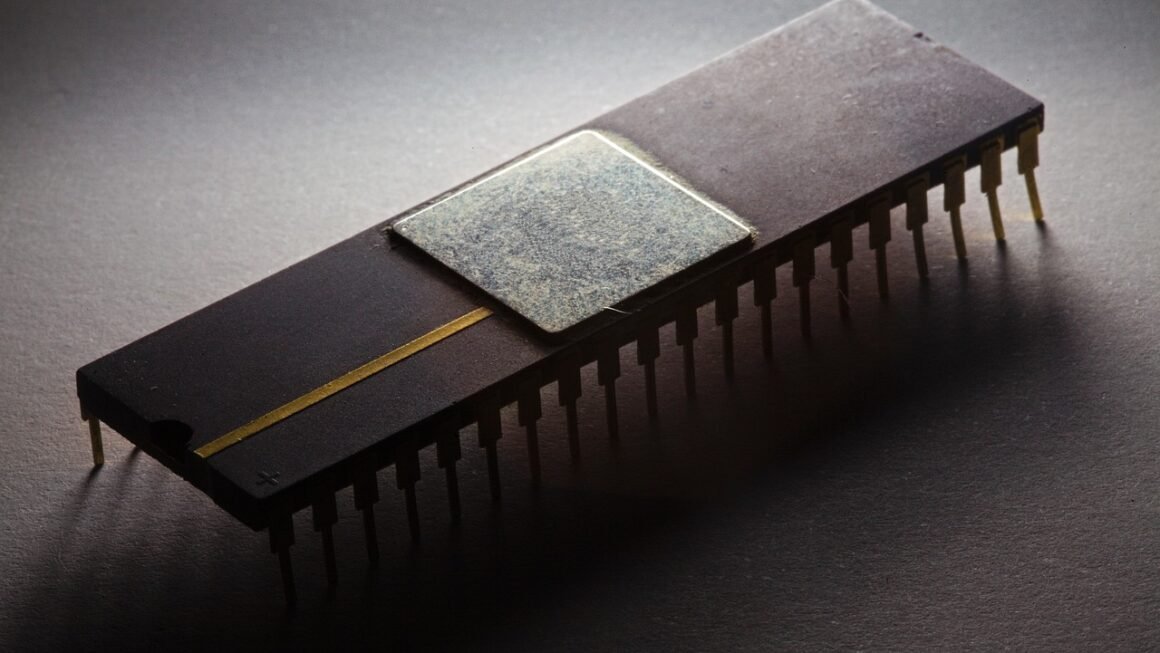Imagine a world where machines can “see” and understand images just like humans do. That world is rapidly becoming a reality thanks to computer vision, a field of artificial intelligence that’s revolutionizing industries from healthcare to automotive. This blog post will delve into the fascinating world of computer vision, exploring its key concepts, applications, and the future it’s shaping.
What is Computer Vision?
Computer vision is an interdisciplinary field of artificial intelligence (AI) that enables computers and systems to extract meaningful information from digital images, videos, and other visual inputs—and take actions or make recommendations based on that information. In essence, it’s about teaching machines to “see” and “understand” the world around them, just as humans do.
The Core Components of Computer Vision
Computer vision systems typically involve several key components working together:
- Image Acquisition: This is the process of capturing visual data through cameras, sensors, or existing image datasets. The quality of the input significantly affects the accuracy of the subsequent processing.
- Image Preprocessing: Before analysis, images often require cleaning and enhancement. This includes tasks like:
Noise reduction
Contrast adjustment
Geometric corrections
- Feature Extraction: Identifying and extracting relevant features from the preprocessed image. These features can include edges, corners, textures, and color information. Algorithms like Scale-Invariant Feature Transform (SIFT) and Histogram of Oriented Gradients (HOG) are commonly used.
- Object Detection and Recognition: This stage involves identifying objects of interest within the image and classifying them. This is where deep learning models, particularly Convolutional Neural Networks (CNNs), shine. Techniques like YOLO (You Only Look Once) and SSD (Single Shot MultiBox Detector) enable real-time object detection.
- Interpretation and Understanding: The final stage aims to understand the relationships between objects and derive meaning from the scene. This can involve scene understanding, image captioning, and more complex reasoning.
How Computer Vision Differs from Image Processing
While often used interchangeably, computer vision and image processing are distinct but related fields. Image processing focuses on manipulating images to enhance their quality or extract specific features. Computer vision, on the other hand, focuses on understanding the content of images and using that understanding to make decisions. Think of it this way: image processing prepares the canvas, while computer vision paints the picture.
Key Techniques in Computer Vision
The field of computer vision employs a range of techniques, each suited for specific tasks and applications.
Convolutional Neural Networks (CNNs)
- CNNs are a type of deep learning architecture specifically designed for processing images. They excel at automatically learning hierarchical features from raw pixel data.
- How they work: CNNs use convolutional layers to extract features, pooling layers to reduce dimensionality, and fully connected layers for classification.
- Examples: ImageNet (a large visual database designed for use in visual object recognition research) trained CNNs are the backbone for many image recognition tasks. Common architectures include AlexNet, VGGNet, ResNet, and Inception.
- Benefits: High accuracy, automatic feature learning, and robustness to variations in image scale, position, and orientation.
Object Detection Algorithms
- Object detection goes beyond image classification by identifying the location of multiple objects within an image.
- Common Algorithms:
YOLO (You Only Look Once): A real-time object detection algorithm that predicts bounding boxes and class probabilities simultaneously. It is known for its speed and efficiency.
SSD (Single Shot MultiBox Detector): Another real-time object detection algorithm that uses multiple feature maps to detect objects at different scales.
Faster R-CNN: A two-stage object detection algorithm that first proposes regions of interest and then classifies them. It is known for its accuracy but is slower than YOLO and SSD.
- Use Cases: Autonomous vehicles, security surveillance, and retail analytics.
Image Segmentation
- Image segmentation involves partitioning an image into multiple segments or regions, often based on pixel similarity or semantic meaning.
- Types of Segmentation:
Semantic Segmentation: Assigns a class label to each pixel in the image. For example, identifying all pixels that belong to a “car” or “road.”
Instance Segmentation: Identifies each individual object instance in the image. For example, distinguishing between multiple cars, even if they overlap.
- Applications: Medical imaging (tumor detection), autonomous driving (road scene understanding), and satellite image analysis.
Real-World Applications of Computer Vision
Computer vision is no longer a futuristic concept; it’s actively transforming numerous industries.
Healthcare
- Medical Image Analysis: Computer vision algorithms can analyze X-rays, MRIs, and CT scans to detect diseases, tumors, and other anomalies with increased accuracy and speed.
- Robotic Surgery: Computer vision provides surgeons with enhanced visual guidance during minimally invasive procedures, improving precision and reducing recovery times.
- Drug Discovery: Computer vision can automate the screening of drug candidates and analyze cellular images to identify promising compounds.
Automotive
- Autonomous Vehicles: Computer vision is the cornerstone of self-driving technology, enabling vehicles to perceive their surroundings, detect pedestrians, traffic signs, and other vehicles.
- Advanced Driver-Assistance Systems (ADAS): Features like lane departure warning, automatic emergency braking, and adaptive cruise control rely heavily on computer vision to enhance safety and driver convenience.
Retail
- Automated Checkout: Computer vision powers cashierless checkout systems, allowing customers to simply grab items and leave the store.
- Inventory Management: Robots equipped with computer vision can scan shelves, identify out-of-stock items, and optimize product placement.
- Customer Behavior Analysis: Cameras can track customer movements and analyze shopping patterns to improve store layout and marketing strategies.
Manufacturing
- Quality Control: Computer vision systems can inspect products for defects, ensuring high quality and reducing waste.
- Robotics: Robots can perform complex assembly tasks with greater precision and speed.
- Predictive Maintenance: Analyzing images of equipment can help predict potential failures and schedule maintenance proactively. For example, analyzing thermal images to detect overheating components.
The Future of Computer Vision
The field of computer vision is constantly evolving, with exciting advancements on the horizon.
Advancements in Deep Learning
- Transformer-based Models: Transformer architectures, which have revolutionized natural language processing, are increasingly being applied to computer vision, achieving state-of-the-art results on various tasks.
- Self-Supervised Learning: This approach allows models to learn from unlabeled data, reducing the need for large, expensive labeled datasets.
- Explainable AI (XAI): Efforts are being made to make computer vision models more transparent and interpretable, allowing users to understand why a model made a particular decision.
Edge Computing
- Real-time Processing: Deploying computer vision algorithms on edge devices (e.g., cameras, smartphones) enables real-time processing without relying on cloud connectivity.
- Privacy: Edge computing can enhance privacy by processing data locally and minimizing the transfer of sensitive information to the cloud.
- Applications: Security surveillance, autonomous robots, and industrial automation.
Augmented Reality (AR) and Virtual Reality (VR)
- Enhanced User Experiences: Computer vision plays a crucial role in AR and VR applications, enabling devices to understand the user’s environment and overlay digital content seamlessly.
- Applications: Gaming, education, training, and remote collaboration.
Conclusion
Computer vision is a powerful technology with the potential to transform virtually every aspect of our lives. From improving healthcare to revolutionizing transportation and enhancing manufacturing processes, the applications are vast and growing. As deep learning models become more sophisticated, and edge computing enables real-time processing, the future of computer vision is brighter than ever. Keeping abreast of these advancements is crucial for professionals across diverse industries seeking to leverage the power of “seeing” machines.



